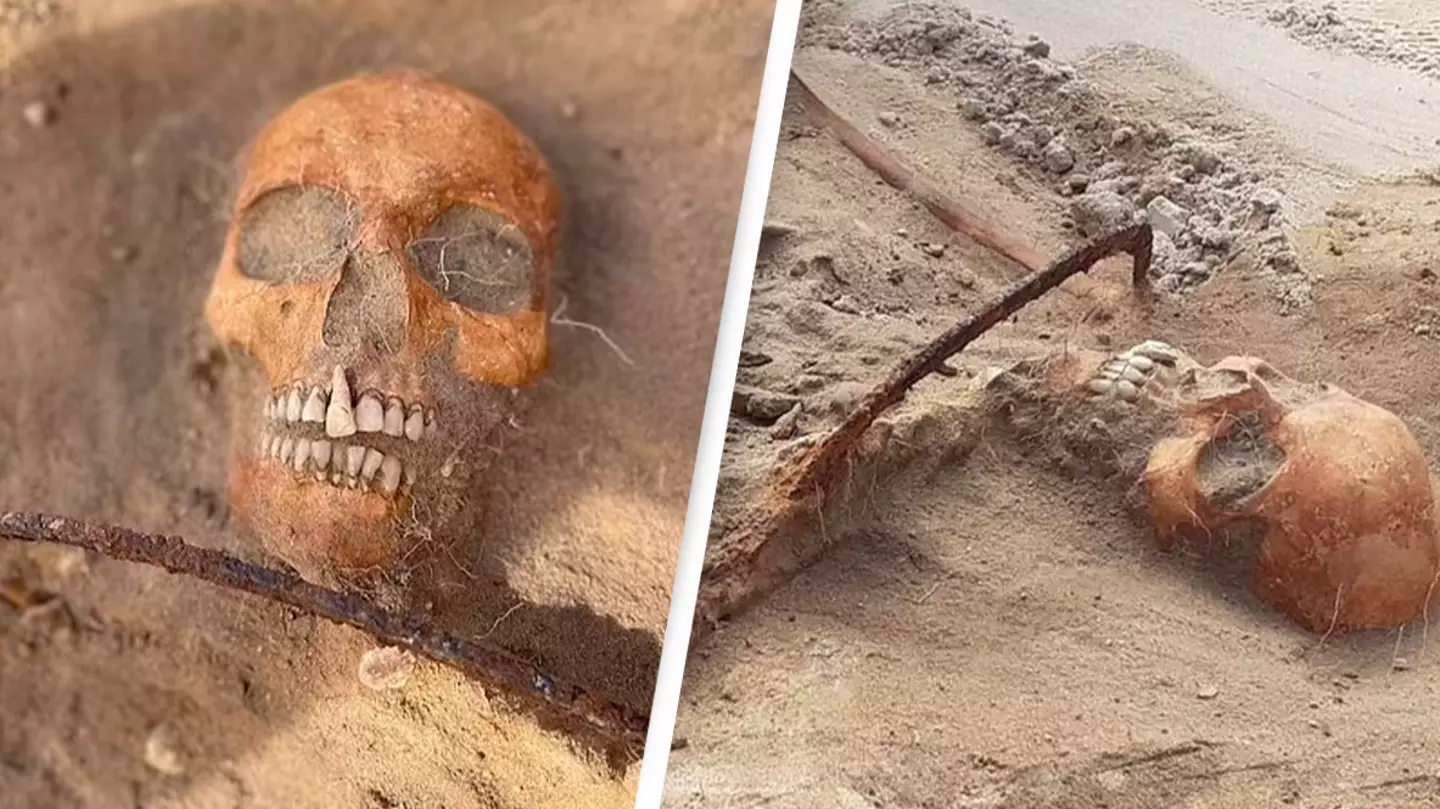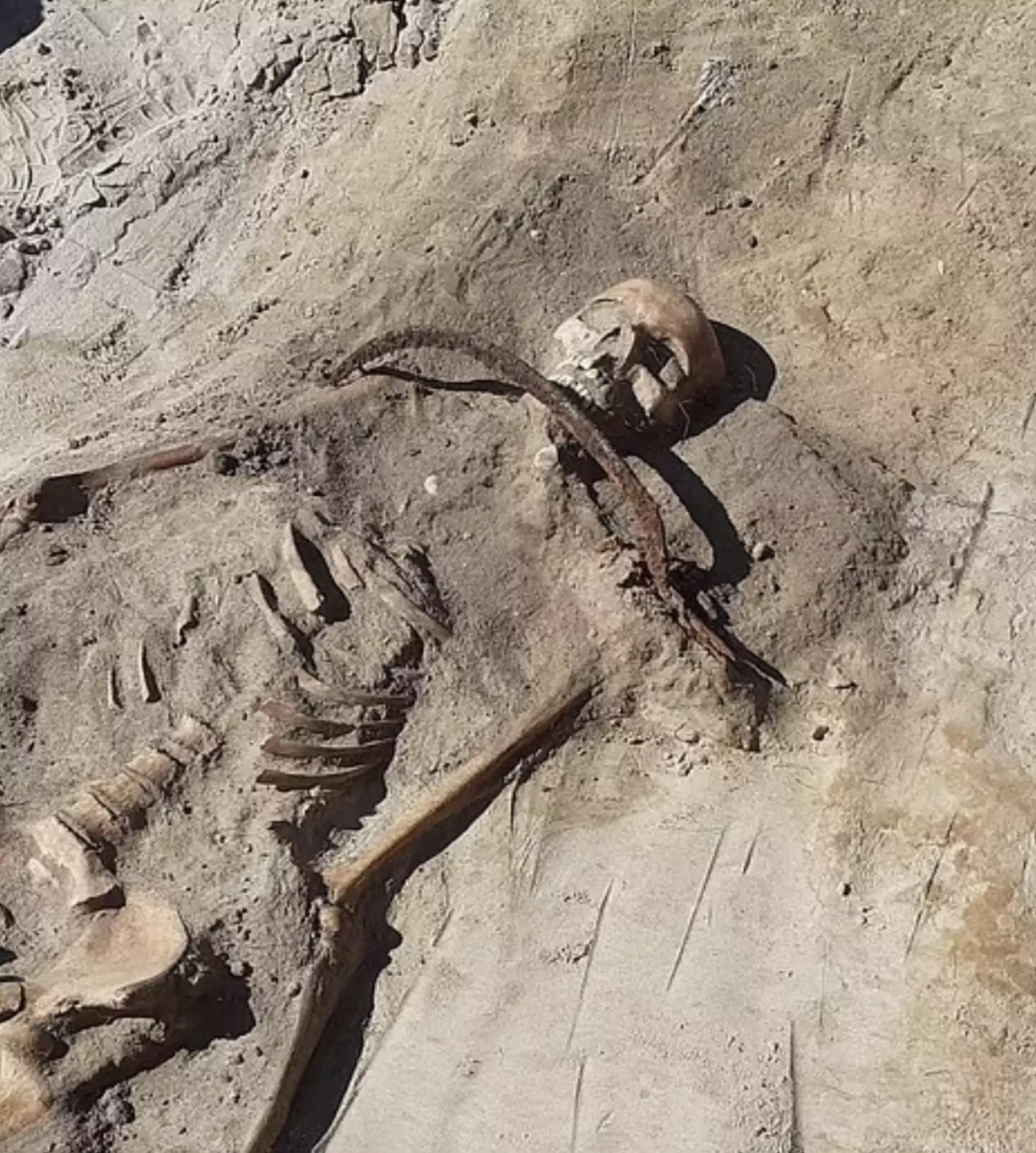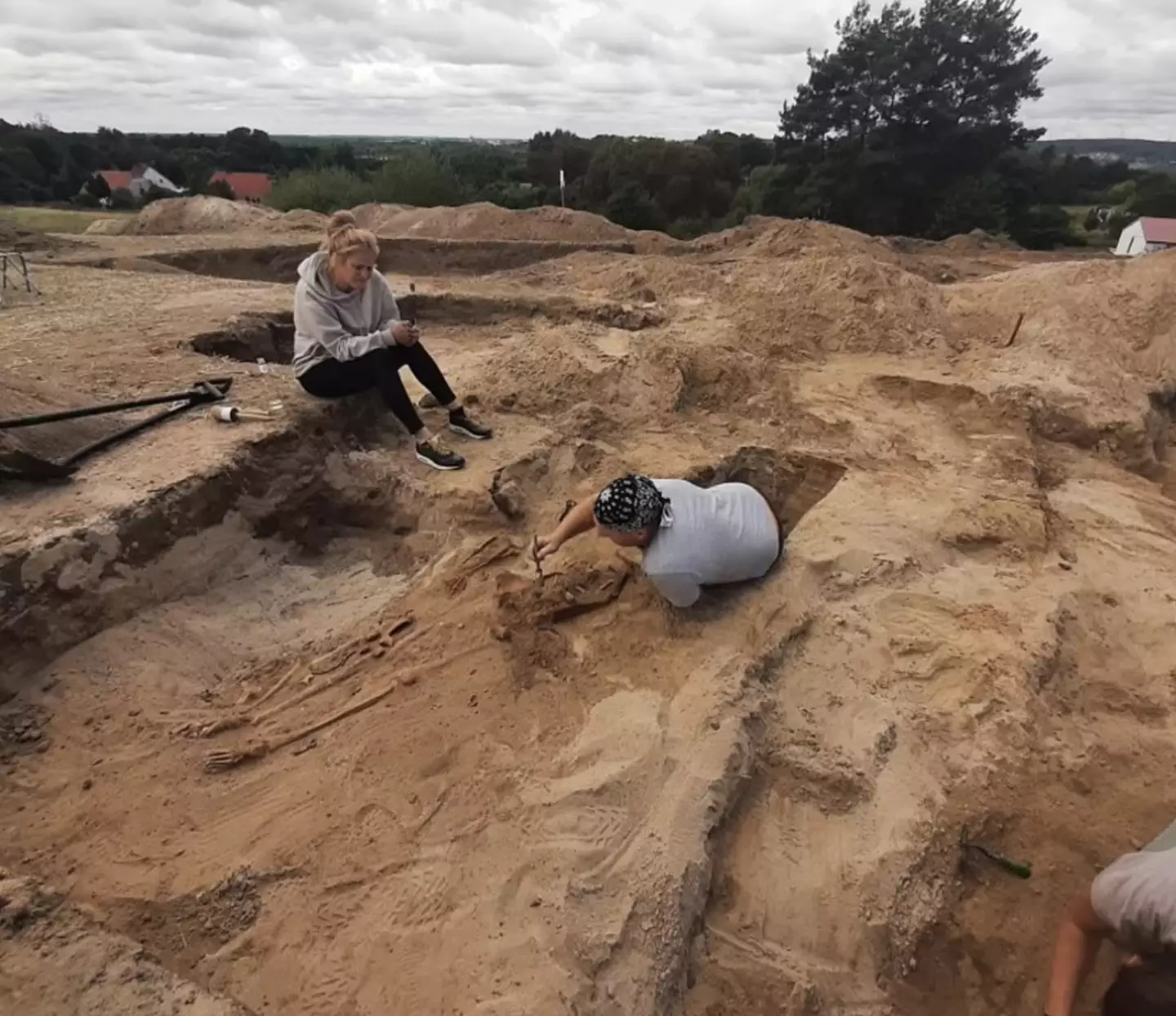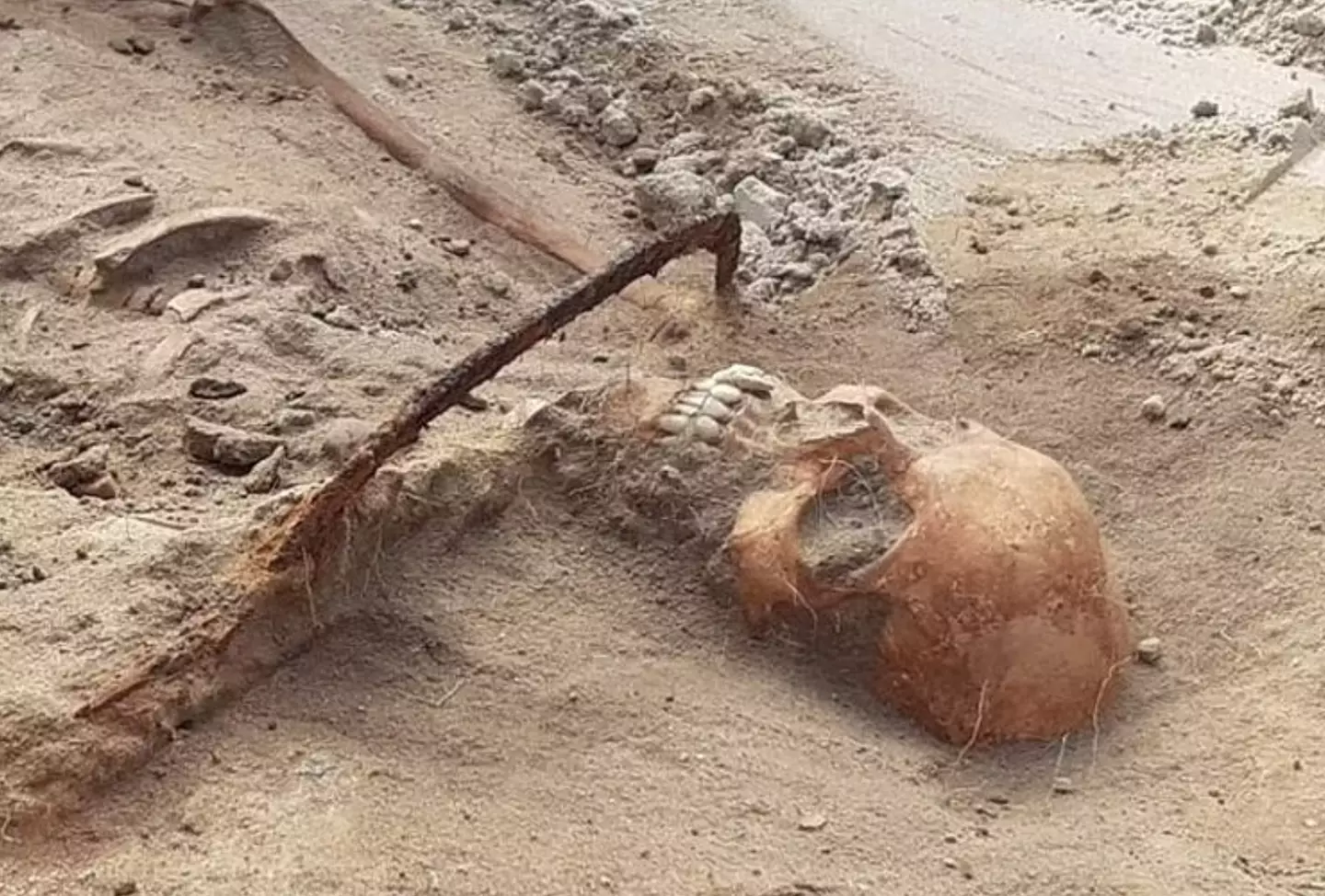
Archaeologists got more than they bargained for when they discovered the skeletal remains of a woman who has been dubbed a 'Vampire' - as she had a sickle directly over her neck.
The researchers were conducting a dig at a 17th century cemetery in the Polish village of Pien when the bones were found.
The sickle - a short-handled farming tool with a semicircular blade - wasn't the only strange thing about the way the woman was buried, as according to The Mail, her toe was also padlocked to ensure she couldn't rise from the dead - hence the 'vampire' moniker.
She was also discovered with a silk cap on her head, which, according to experts, indicates she had high social status at the time of her death.
Advert

Team leader Professor Dariusz Poliński from the Nicholas Copernicus University in the nearby city Torun admitted that the form of burial was unusual for the time period.
He said: "Ways to protect against the return of the dead include cutting off the head or legs, placing the deceased face down to bite into the ground, burning them, and smashing them with a stone."
"The sickle was not laid flat but placed on the neck in such a way that if the deceased had tried to get up most likely the head would have been cut off or injured."
Advert
He concludes that the padlocked big toe on the woman's left foot likely symbolised 'the closing of a stage and the impossibility of returning.'

The 'vampire' archetype dates back to the 11th century in mainland Europe, where people feared that the dead would rise again and terrorise the community.
However, while it isn't uncommon for a dead person suspected of being a vampire to have a steak hammered through their skull to ensure they stay dead, the sickle over the throat is certainly a more novel approach.
Advert
It isn't completely new to archaeologists though, as back in 2015, skeletons were found buried in a very similar manner to the Pien find.
Researchers in the village of Drewsko, around 130 miles away from Pien, uncovered the remains of several men who also had a sickle pressed to their throats.

The researchers said back in 2015: "When placed in burials they were a guarantee that the deceased remained in their graves and therefore could not harm the living, but they may also have served to protect the dead from evil forces."
Advert
"According to folk wisdom, a sickle protected women in labour, children and the dead against evil spirits.
"It also had a role in rituals designed to counter black magic and witchcraft," the added.
The latest discovery has now been sent to Torun where archaeologists will continue with their research.
If you have a story you want to tell, send it to UNILAD via [email protected]
Topics: Science, World News
